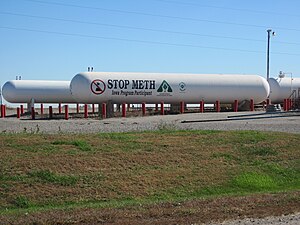
The life cycle of our local (county) All Hazard Mitigation Plans has tracked the growth, and recently contraction, of methamphetamine use in rural America. We classified meth as a hazardous substance, a technological hazard, due to the unique impacts of manufacturing—the devastating effects on property as well as people, and the large costs to clean up meth houses.
The ‘meth house’ hazard has moderated after recent state legislation restricting purchase of certain ingredients, however the illegal drug continues to pop back up in unexpected places. The National Domestic Preparedness Coalition highlighted this article today on their feed:
‘Shake-and-bake’ meth fills hospitals with burn patients
By Jim Salter
Associated PressST. LOUIS — A crude new method of making methamphetamine poses a risk even to Americans who never get anywhere near the drug: It is filling hospitals with thousands of uninsured burn patients requiring millions of dollars in advanced treatment — a burden so costly that it’s contributing to the closure of some burn units.
So-called shake-and-bake meth is produced by combining raw, unstable ingredients in a 2-liter soda bottle. But if the person mixing the noxious brew makes the slightest error, such as removing the cap too soon or accidentally perforating the plastic, the concoction can explode, searing flesh and causing permanent disfigurement, blindness or even death.
An Associated Press survey of key hospitals in the nation’s most active meth states showed that up to a third of patients in some burn units were hurt while making meth, and most were uninsured. The average treatment costs $6,000 per day. And the average meth patient’s hospital stay costs $130,000 — 60 percent more than other burn patients, according to a study by doctors at a burn center in Kalamazoo, Mich…
Be careful out there.
.
(cross-posted from All-Hazard Mitigation blog)
